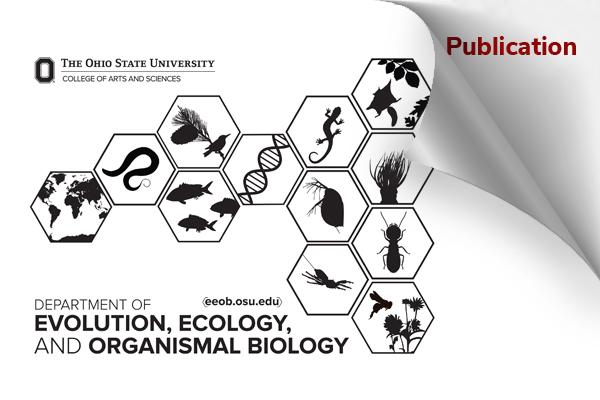EEOB publication - Gutierrez and Hovick

Compounding negative effects of leaf litter absence and below ground competition from an invasive spring ephemeral...
Grace Gutierrez and Stephen Hovick. DOI:10.22541/au.173711012.24594636/v1
Abstract
Restoring invaded ecological communities requires understanding whether native declines are driven directly by invader competition versus changes to abiotic conditions that are associated with invader presence. In forest understory communities, declines in spring ephemerals could result from invasion or alternatively by loss of leaf litter layers, from which native spring ephemerals evolved to emerge annually. Here, we investigate how native spring ephemerals (Erythronium spp.) are affected by leaf litter absence and direct competition with the functionally similar invader lesser celandine (Ficaria verna). The absence of a litter layer alone reduced Erythronium asexual reproduction (corm biomass), with reductions magnified when celandine was also present. Celandine impacts occurred despite celandine having limited aboveground growth under common garden conditions, indicating below ground competition with celandine is sufficient to elicit substantial impacts on Erythronium. This reduced clonal growth would eventually hinder Erythronium sexual reproduction because flowering only occurs in large individuals. Both Erythronium species responded similarly to experimental conditions: in response to shading from litter, Erythronium produced larger, heavier petioles and invested less in leaf blade tissue as a proportion of total shoot tissue. Though reduced leaf blade investment was correlated with reduced corm growth, the net benefits of litter on growth outweighed any negative effects of this biomass allocation tradeoff. These results demonstrate how, although direct competition from invasive plants can impact co-occurring natives, invader-induced changes to local environmental conditions also have important indirect effects. Management to support native spring ephemerals should include preventing losses of or restoring depleted forest litter layers as well as reducing invasive competition.
